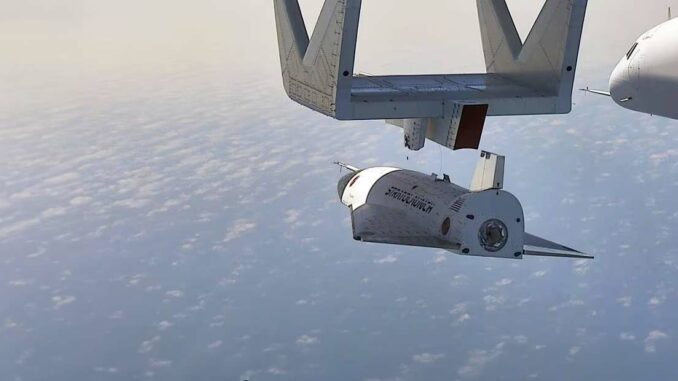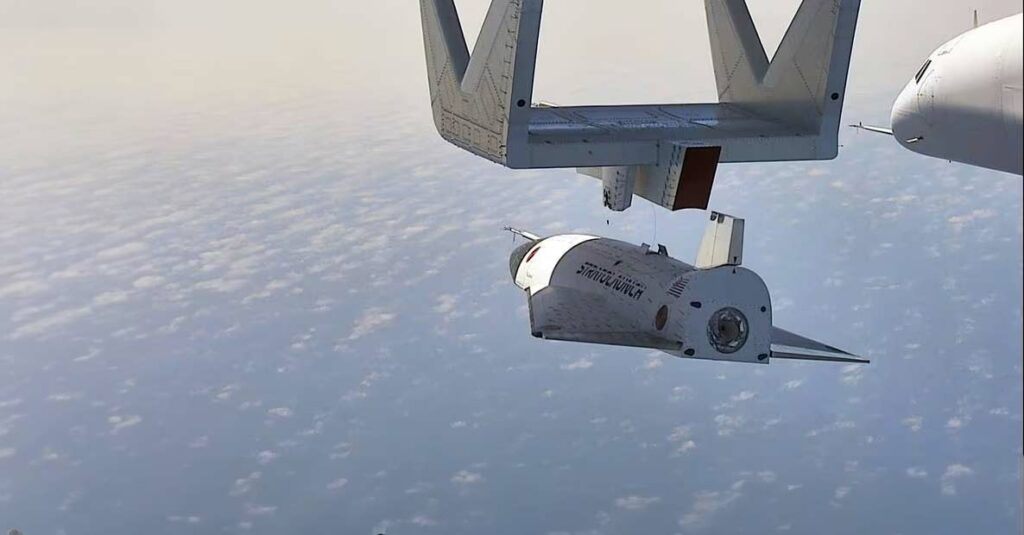
Find out how Stratolaunch aims to reach hypersonic speeds with its upcoming Talon-A test, marking a significant step forward in aeronautics.
Stratolaunch is about to take the next step in the exploration of hypersonic speeds with its Talon-A vehicle. After a successful test reaching near-hypersonic speeds, the company is preparing for a mission to exceed Mach 5, or five times the speed of sound. This development marks a crucial milestone not only for Stratolaunch, but also for the aerospace and defense industries, highlighting the company’s future capabilities and ambitions.
Stratolaunch and hypersonic exploration
The recent Talon-A test mission saw the vehicle reach high supersonic speeds, demonstrating the reliability and efficiency of its design. Launched from the Mojave Air and Space Port in California, the unmanned vehicle accomplished its primary objectives before completing its trajectory in the Pacific Ocean. This success is a prelude to the company’s ambitious goal of reaching or surpassing Mach 5 on its next mission.
Implications for the Department of Defense
The successful testing of the Talon-A is of significant importance to the US Department of Defense, which is seeking to strengthen its hypersonic capabilities in the face of similar developments from China and Russia. Stratolaunch could offer a cost-effective, reusable platform for testing and validating high-speed components, supporting defense efforts in a strategically crucial area.

Talon-A test campaign
The Talon-A’s first powered flight provided valuable data to DoD customers, including the Pentagon’s Test Resource Management Center. The next mission will intensify this collaboration, integrating SkyRange’s advanced sensors to track the mission, marking an important milestone in the development of hypersonic capabilities under test.
Preparations for the next mission
For its next mission, Stratolaunch’s TA-2 vehicle will undergo no structural modifications, the previous mission having validated the aircraft’s design and construction. However, operational lessons learned from the first vehicle are being taken into account to optimize thruster management and continuously improve performance.
The crucial role of the Roc carrier vehicle
The Roc carrier vehicle, essential to Talon-A missions, undergoes test flights to increase its operational altitude in preparation for the next mission. These flights are part of the Federal Aviation Administration’s mandatory inspections, attesting to the airworthiness of Roc, described by Stratolaunch as a strategic national asset.
Future prospects and fleet expansion
Stratolaunch is also preparing a second carrier aircraft, a Boeing 747, to support future Talon-A missions. This development underscores the company’s commitment to providing advanced aerial capabilities for classified Department of Defense testing, prior to embarking on Talon-A missions.
Stratolaunch’s commitment to achieving hypersonic speeds with the Talon-A embodies the cutting edge of aeronautical innovation. The implications of these tests for defense are considerable, opening up new avenues for the validation of technologies at extreme speeds. As the company prepares for its next mission, the aerospace and defense industries are watching closely, anticipating advances that will redefine future military and aeronautical capabilities.
War Wings Daily is an independant magazine.